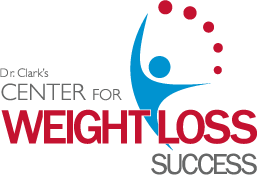A lot of times emotions can turn on that “feeding frenzy.” Or, sometimes situations will turn it on. Certain foods will call your name. We all seem to have our own triggers. We also have our own cravings. A trigger is something that sets in motion a course of events. Here we’re talking about eating when we don’t necessarily want to eat or should be eating. Eating triggers fall into 3 categories: trigger foods, trigger feelings, and trigger environments.
A trigger food is a specific food that sets off a course of overeating. Is there some food that you can only have a tiny bit and then you need to eat everything in sight? Control is often lost and excessive amounts of food may be consumed. Common trigger foods are usually highly refined foods such as sugar/fat combinations like ice cream. Another common trigger food is salty/starchy combination such as bread, chips, or crackers. I’m not a big fan of diet deprivation. I don’t believe in saying, “You can never eat this…” You’ll typically want it even more if you think you can never have it. If you want it even more it makes it harder to leave it alone. Can we be satisfied with a little bit? That’s what you want to strive for. If there truly is a food that causes you to eat the whole thing (whole bag of chips) then you probably should avoid that food. It’s the food, not the emotion that triggers the out of control eating. It’s not the situation.
Physiologic cravings are real. They tend to be most pronounced with high carb foods such as cookies, breads, pastries, and chips. They usually peak during the first few weeks of dieting. Then they fade. But you can experience true withdrawal symptoms. Carbohydrates are like a drug. If you have a little bit you’re going to want more. The symptoms are worsening cravings, headaches, fatigue, shakiness, and irritability. Once you get through the withdrawal symptoms it gets easier but that doesn’t make it easy. Many cravings are related to blood sugar swings. Every time the blood sugar comes down you’re going to want more because your body wants something to keep that blood sugar from dropping. Consequently you’re going to get a big swing up if you have more of that food. The big blood sugar swings make the cravings even worse. Appetite suppressants can help. Chromium can also help. It’s a mineral and can help smooth over blood sugar swings. You can get it just about anywhere. We sell it here in our nutrition store. On the bottle it will say take one a day as a supplement. Unfortunately that doesn’t work for cravings. Generally you need to take it 3 times a day. It’s very safe but you shouldn’t take a bottle every day!
A trigger feeling is an emotion (good or bad) which sets off a period of overeating. Examples are stress, anxiety, anger, sadness, or loneliness. It often sets off overeating of just about any food (salty, crunchy, sweet, doughy, etc.….). Identifying the emotion is key to controlling these triggers. Journaling is one of the best ways to sort this out. It’s not just writing down what you’re eating. It’s writing down why you’re eating. If you’re hungry and it’s time to eat then that’s a good reason. What if it’s not time to eat? If you’re not hungry, what are the reasons? Am I stressed? Am I excited? Am I depressed? You’ll see a pattern developing.
Trigger environments are specific situations or places that set off an episode of overeating (Movie Theater, buffet, sporting event, socializing with a specific group of friends). The overeating is set off by the specific environment or situation. Usually you regret it the next day. To manage this you have to identify the specific location, people, or events. Avoidance works, but often that’s not possible. Are you really never going to the movies again? Are you really going to avoid your friends? It’s important to develop strategies to minimize the overeating in those environments. Plan ahead of time what you’re going to do. It’s hard to unlearn things but we have to.
We all have willpower even though we don’t think we do. Some of us need to take it up a notch. Cravings tend to fade with time. They can come back. The internal struggle with cravings leads to emotional pain. It’s often due to indecision. We really haven’t made up our mind. We literally make thousands of eating decisions every day. With fasting you get rid of a lot of decisions. Make the hard and fast decision that you won’t give in to the craving. To weaken the intensity and reduce the craving you must stop giving in to them. It’s easier said than done but it does work. Avoiding the indecision can be very helpful. Willpower is like a muscle. It can be strengthened with practice.
Your Strategies for Improving Willpower
There are strategies for improving willpower. The first strategy is Mindset Changing Techniques. You need to be truthful with yourself. Tell yourself it’s a craving, not true hunger. Is there another reason you’re eating (angry, lonely, tired, and stressed)? Don’t waiver in your commitment. It will get easier with time. We want to imagine the aftermath of giving in. Sometimes when we give in it feels good to eat that sugary food for a few minutes. You might even get a sugar high. But typically, a little later, you’re not going to feel so good. Replace the word can’t with won’t. You always have a choice. Review your goals and remind yourself why you’re doing this. Why do you want to continue with this weight loss process? If you give in all the time, you’re always going to be at risk for gaining weight.
The second strategy for improving willpower is Habit Changing Techniques. You want to distance yourself from the food you crave. Remove the food or yourself from the scene. Remove the food or distance yourself from the scene. For example, don’t go to the movies for a while. When you go back, don’t revert back to the big tub of buttered popcorn, bring some protein snack along with you instead. Drink something. Thirst is often confused with hunger. If you drink something you often realize you weren’t hungry. Your body will tell you that you need something. It could be just the water that it needs. Try to change your mindset. Relax. Set a timer for 5 minutes and concentrate on breathing. Distract yourself: brush your teeth (how many people want to eat after they’ve brushed their teeth?), paint your nails, brisk walk, exercise, call a friend, shower, practice a musical instrument, or work in the yard. Do something that will distract you for a period of time and the cravings will fade away.
In summation, food trigger are all around you. Learn to recognize them for what they are. Develop the strategies to combat them. It will get you that much closer to your weight loss goals! If you need help, we offer counseling for anyone that’s struggling with that. The counselors will figure out a solution for you. Contact us at 757-873-1880 and set up a free consultation to figure out which program or plan fits your needs!








 Cat Keller has a wealth of experience in marketing, e-marketing, advertising and customer service and manages our Weight Loss Nutritional Store. She is always planning something fun and exciting. special events, discounts, giveaways – it’s never a dull moment. She is happy to help you with questions you may have regarding our products or services. Cat is a graduate of William & Mary, where she studied Government/Pre-Law and minored in Marketing.
Cat Keller has a wealth of experience in marketing, e-marketing, advertising and customer service and manages our Weight Loss Nutritional Store. She is always planning something fun and exciting. special events, discounts, giveaways – it’s never a dull moment. She is happy to help you with questions you may have regarding our products or services. Cat is a graduate of William & Mary, where she studied Government/Pre-Law and minored in Marketing.